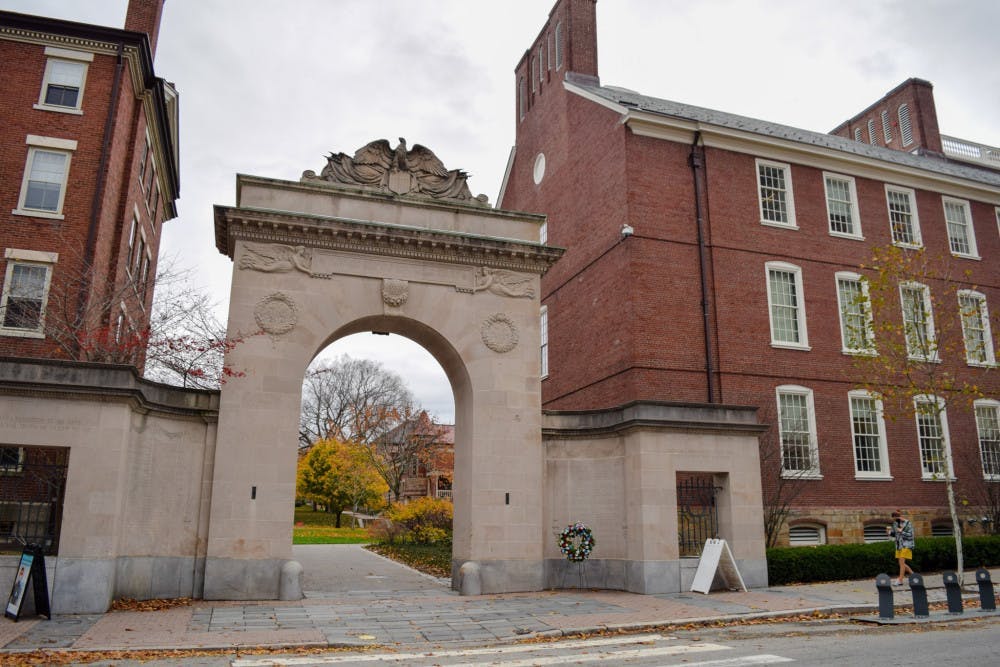This year marks the 10-year anniversary of the return of the Reserve Officers’ Training Corps to Brown, after the program was discontinued on College Hill in 1969.
ROTC, an intensive program sponsored by the U.S. military, allows Brown students to become commissioned officers with the Army, Navy and Air Force upon graduation. As part of the program, students partake in frequent training in preparation for a mandatory service requirement of four years on active duty or eight years in the reserves, receiving full tuition payment along with monthly stipends throughout their participation in the program at Brown. Participating in the reserves also comes with a monthly training commitment with the unit in one’s area.
The ROTC program was discontinued at Brown in 1969 because ROTC officers could not hold faculty status and ROTC course units could not carry credit. Since then, there were a few attempts to bring ROTC back to Brown. The decision to not reinstate the program was reaffirmed in 1981 and again in an additional assessment in 2002. In 2011, former University President Ruth Simmons assembled a committee to reevaluate the University’s policies on ROTC, especially in light of the U.S. House and Senate votes to end the ban on openly gay troops serving in the military.
Chair of Visual Art Leslie Bostrom was one faculty member selected to be on the committee, which was composed of seven faculty members, three students and one administrator, and which met regularly during spring 2011.
“We learned about the history of ROTC in general, and we had some visiting speakers who were pretty in depth,” Bostrom said. “The opportunities that (ROTC) provides (are) good.”
There were also veterans on the committee who lended additional perspectives and knowledge to the group. A vote was held among the committee members, a majority of whom recommended to the University bring the program back. Since then, students have been able to apply to ROTC at Brown. ROTC students are still unable to receive formal academic credit for any aspect of the program.
Brown’s ROTC program prepares participants for the physical and mental toll of military service. Physical training practices take place Monday, Wednesday and Friday mornings each week from 6:30 a.m. to 7:30 a.m. Physical training practices take place at Providence College on these mornings, with ROTC members taking part in cardio exercises and other group activities such as squad and small unit tactics. Besides physical training, there are class and lab sessions that take place on Wednesdays from 2:30 p.m. to 6 p.m. Lab and class sessions alternate each week with the skills taught in class being utilized in lab the next week.
Lab sessions include practicing “ambushes or attacks” or wilderness skills such as “learning to find your way with a compass or protractor,” Hank Hultman ’23 said. These sessions take place at Bryant University throughout the semester and then culminate in a field training exercise over a long weekend at a nearby army base.
Physical training and labs include ROTC students from other schools as well. The University takes part in a “battalion” of participating schools including Bryant University, Providence College, Rhode Island Community College, Johnson and Wales University and University of Massachusetts-Dartmouth, said John Fullerton ’24.
“It’s a really great opportunity to meet people from outside of Brown and you can meet a plethora of people that you might not otherwise have access to,” Hultman said.
The ROTC community has become tight knit within Brown, and students are appreciative of the fact they also have the ability to meet students from other schools.
“It totally is like a community, like a sports team,” Fullerton said. “We do spend a lot of time together.”
Balancing academics and an intense ROTC schedule has also helped participants improve their time management skills. Cadets spend around 10 to 15 hours per week participating in physical trainings, class and lab sessions. In terms of rigor and time commitment, “I equate (ROTC) to a club sport,” Lily Johnson ’25 said.
“It’s essentially like I’m taking five classes this semester, but I only get credit for four,” Hultman added.
Students join ROTC for a variety of reasons but a common one is the possibility of giving back to the country through providing service.
“I’ve grown up very privileged, and I wanted … to help out in a different way (and) serve my country,” Hultman said.
Fullerton also acknowledged his privileged upbringing and how he wanted to find a way to give back to the community.
“I see (ROTC) as a way to give back rather than (having) an entirely selfish career right away,” Fullerton said.
While Brown and the U.S. military are both long-standing, established entities, “Brown and ROTC are polar opposites,” Johnson said.
The Army is a “very traditional, antiquated environment and Brown is (one of) the most progressive institutions” in the nation, Fullerton noted.
But taking part in these two different “worlds,” as Fullerton put it, has made him appreciate what both have to offer.
“I find …(those) who go to Brown and join the army (to be) a very interesting group of people. It’s just a myriad of personalities and really great, really driven people,” Fullerton said.
ROTC also offers opportunities to their cadets through internships and the immediate benefit of tuition payment. If an ROTC cadet decides to drop out of the program during their first year, the military will continue to pay tuition for the remainder of the year, but if a cadet drops out in their second year, then they will have to pay that year’s tuition back. ROTC programs outside of Brown also may pay for room and board.
While ROTC is a sizable time commitment, each participant mentioned the sense of community and bonds they have formed throughout their participation.
“There’s this truth to (a) shared experience of digging deep with a group of people and sacrificing a lot,” Hultman said. “You’re working hard, then you form deeper connections much quicker.”





